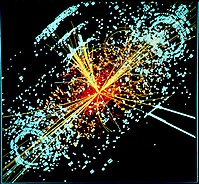
Photo from wikipedia
Random matrix theory (RMT) can be used to simulate the effect of internal waves on broadband acoustic mode time series in deep water, as described by Hegewisch and Tomsovic in… Click to show full abstract
Random matrix theory (RMT) can be used to simulate the effect of internal waves on broadband acoustic mode time series in deep water, as described by Hegewisch and Tomsovic in several papers [Europhys. Lett. 2012; J. Acoust. Soc. Am. 2013]. Using RMT, narrowband mode propagation consists of the multiplication of a series of propagator matrices designed to model the mode coupling due to internal waves at a single frequency. In a recent paper, we varied the correlation of the mode coupling matrices with frequency and examined the effect on the time series generated via Fourier synthesis [Van Uffelen & Wage, Inst. of Acoustics Conf., 2016]. This talk focuses on another key aspect of the RMT model, i.e., mode-to-mode coherence at a single frequency. Modes decorrelate as they propagate through internal waves. Building on Creamer's work, Colosi and Morozov use transport theory to analyze mode-to-mode coherence and mode energy in deep water environments [J. Acoust. Soc. Am., 2009]. This talk compares the energy ...
Journal Title: Journal of the Acoustical Society of America
Year Published: 2017
Link to full text (if available)
Share on Social Media: Sign Up to like & get
recommendations!